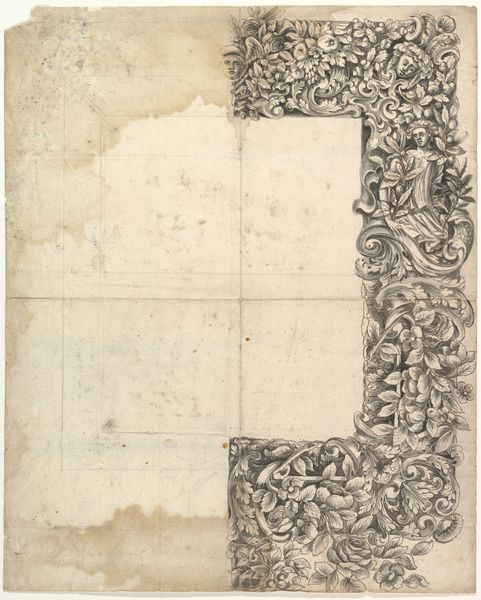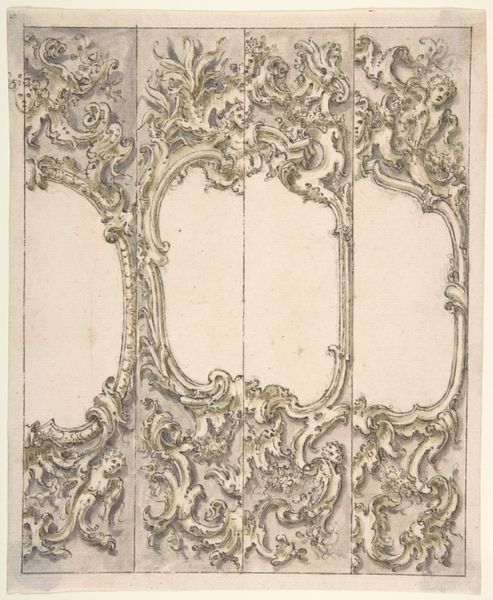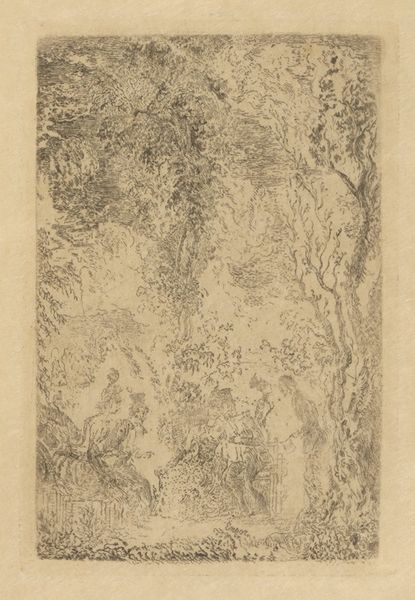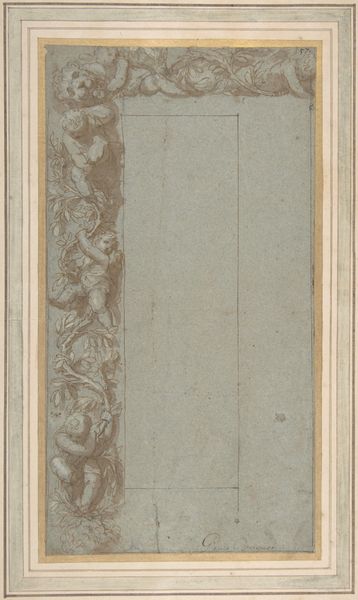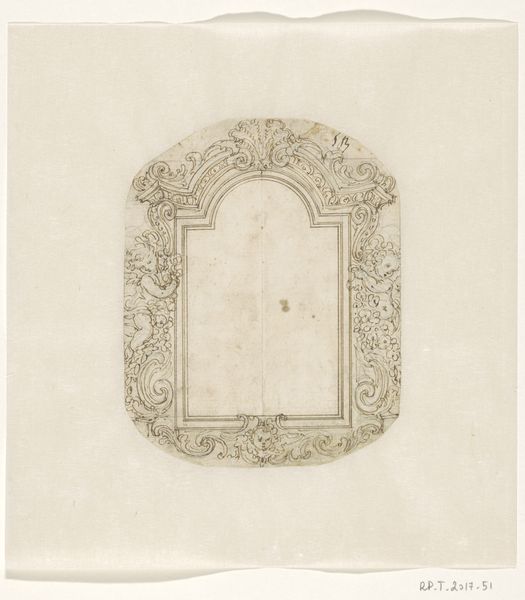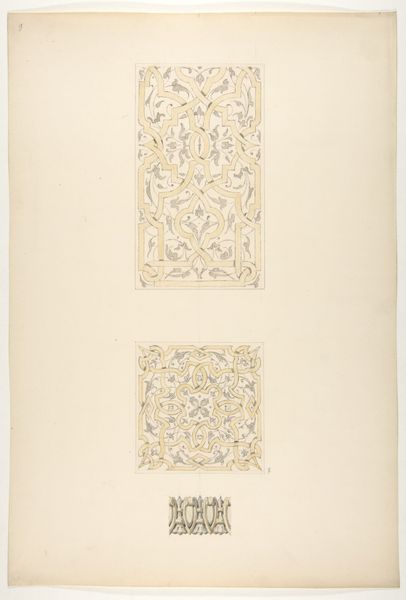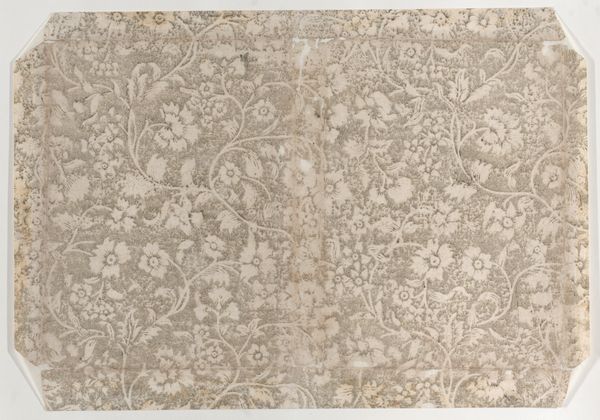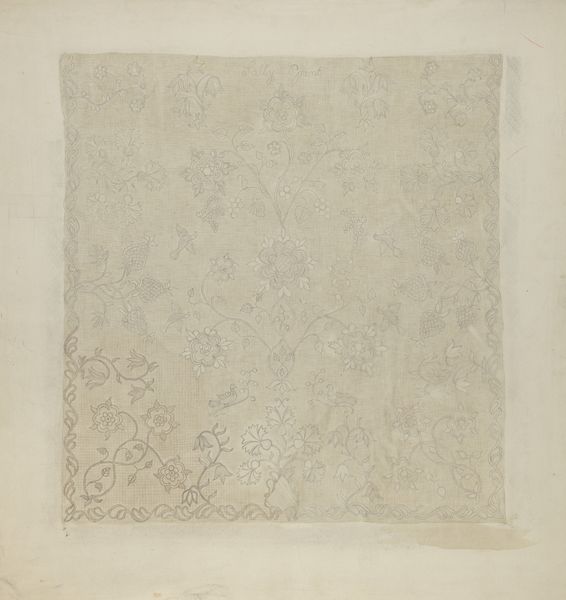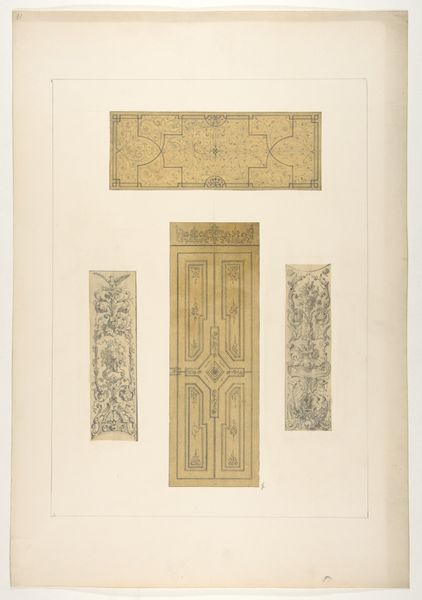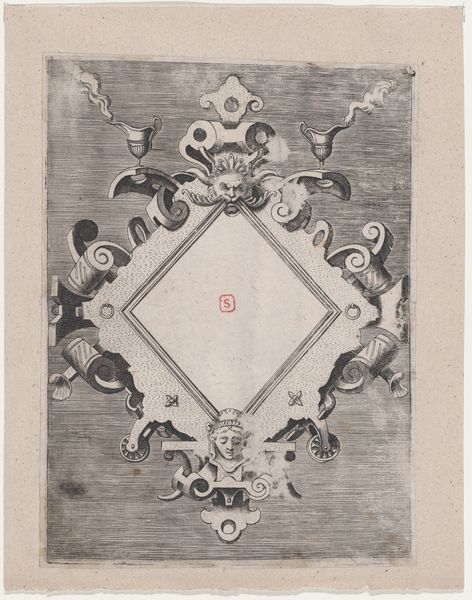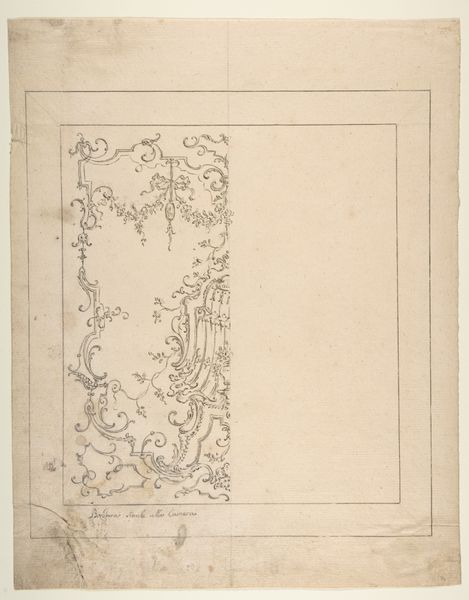
drawing, print, engraving
#
drawing
#
baroque
# print
#
pencil sketch
#
figuration
#
form
#
line
#
history-painting
#
decorative-art
#
engraving
Dimensions: Sheet: 7 9/16 x 6 15/16 in. (19.2 x 17.7 cm)
Copyright: Public Domain
Editor: Here we have "Design for a frame with foliates and putti," a 17th-century engraving currently held at the Met. I'm struck by how ornate and intricate it is. All these figures and plant forms packed into one frame design… it feels incredibly elaborate. How do you interpret this kind of ornamentation in its historical context? Curator: That’s a keen observation! Considering the socio-political landscape of the 17th century is essential. Think about the Baroque era – a period defined by grand displays of power and wealth, often used to reinforce social hierarchies. This design, brimming with putti and foliage, embodies that excess, doesn't it? It’s less about function, perhaps, and more about demonstrating status through detailed artistry. What does the repetition of the cherubic figures suggest to you? Editor: I guess it creates this image of innocence and perhaps religious purity? I hadn’t thought about how that plays into demonstrating power. Curator: Exactly. Consider the role of the Church and aristocracy in dictating artistic trends at the time. These weren't just decorative choices, but potent visual statements intended to reinforce dominant ideologies. These designs reinforced those positions in society. How might designs like this have influenced, or even enforced, contemporary social norms? Editor: I see. It's like this design becomes a visual language for reinforcing existing power structures… almost like propaganda in a way? It makes me wonder about the access to art like this for different social classes. Curator: Precisely! Your point about access is key. Whose stories were being told, and who had the privilege to tell them? It’s crucial to keep asking these questions as we engage with art history, connecting historical contexts to contemporary dialogues about equality and representation. Editor: That makes the image feel very different now! Thanks for shedding some light on its deeper meanings and showing me how this work participates in cultural dialogue. Curator: My pleasure! It's always rewarding to see these old works through new, critical lenses.
Comments
No comments
Be the first to comment and join the conversation on the ultimate creative platform.
